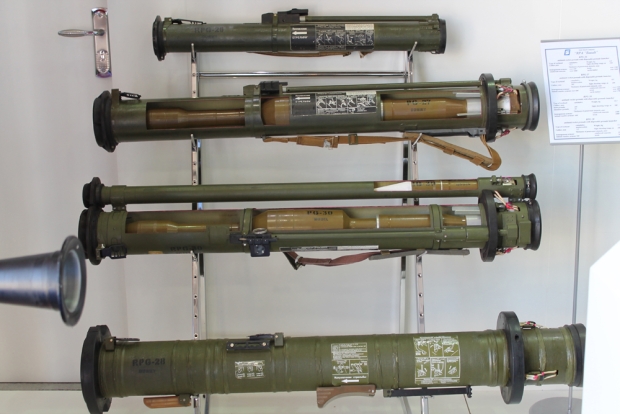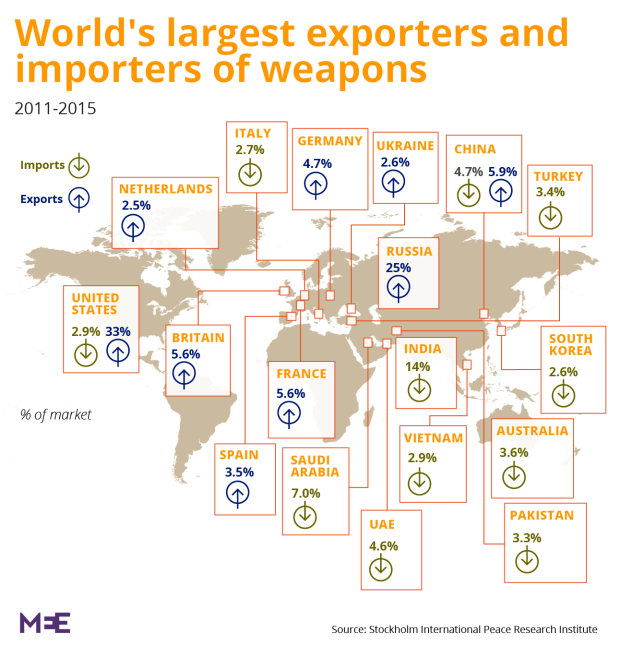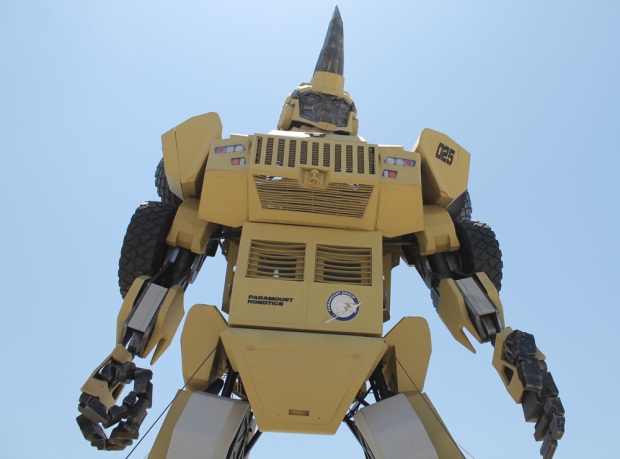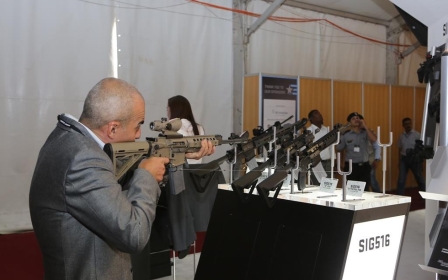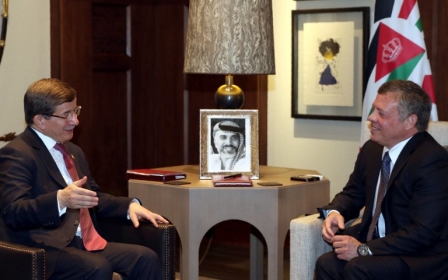Jordan's arms expo: Where war is business, and business is good
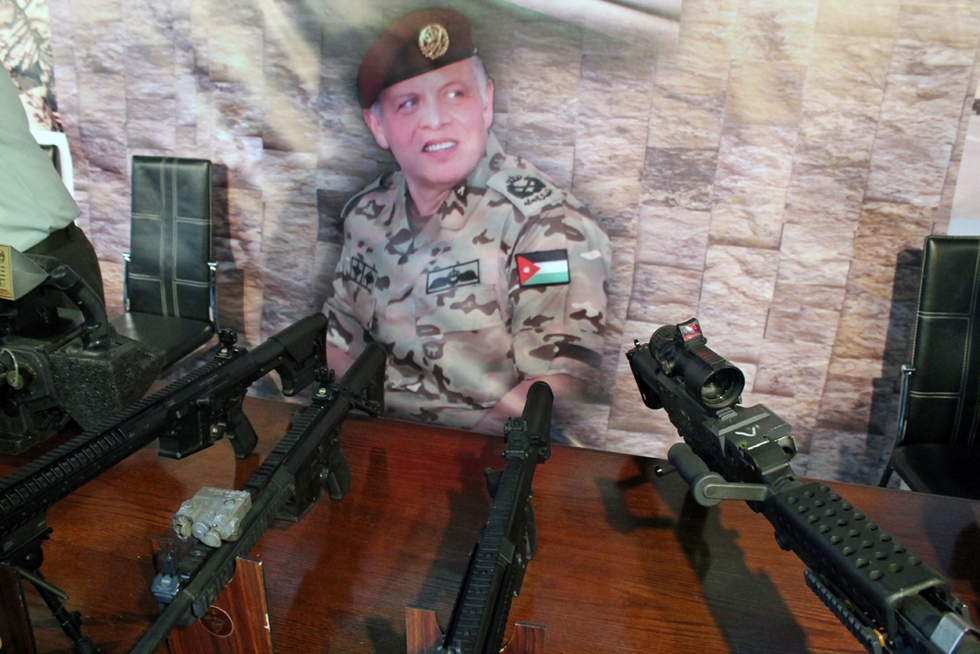
AMMAN - Pretty blonde saleswomen smile as they showcase the latest rocket-propelled grenades. Paunchy Americans in rumpled suits offer 30-minute tutorials on anti-tank weapons. Ukrainians flog state-produced tanks not 50 metres from where Russians sell a “tandem warhead” designed to destroy them.
For anyone not part of the defence industry, spending the day at an arms fair would rank among the more surreal of life experiences.
The everyday collides with the extraordinary: a friendly sales pitch that ends with “and you’ll find all our bombs on our website”, or wandering over to a grandmotherly type who offers sweets and a quick tutorial on thermobaric warheads (“very effective against both fortifications and manpower”).
A gala tour of Russia’s latest for-sale arsenal, then on a few dozen steps to the Ukrainian pavilion. Turkey, too, is flogging its war-making wares – again, a discreet distance from the shiny model of a Russian Sukhoi SU-32 bomber.
Politics be damned, there is money to be made.
The only regional players not invited: Iran, Israel and, for the first time, Syria.
In keeping with Jordan’s delicate diplomatic manoeuvring on the Syrian crisis, while Syrian President Bashar al-Assad’s government was not invited, some of the core arms providers to the Syrian opposition were there – the US, Qatar and Saudi Arabia – as was the TOW anti-tank system, the most effective weapon these backers have offered the rebels they support.
The big seller
“TOW is a big player in the international market. Ground to ground, it’ll take out anything on the battlefield,” said one of the affable Americans manning the weapon on display (he, like most people operating SOFEX displays, did not have permission to speak on the record).
TOW stands for tube-launched, optically tracked, wire-guided missiles, and up close, the system is a beast: 190kg fully loaded, its heaviest component is 22.5kg alone.
The latest version – which isn’t yet on Syrian battlefields – features night-vision, all-weather capabilities and improved guidance electronics. With its scope angled out the door and up a nearby hill, the TOW on display at SOFEX attracted no shortage of admirers.
“If there’s a car moving, how would you hit it?” asked a passer-by in dress blues.
“I track it right to impact,” said the salesman, hunkering down behind the TOW. He explained that in Syria, the weapon had been used to impressive effect on land targets, mostly within 1km, though the wire attached to the missile in the model most often seen in Syria is 3750m long.
“You should check out the video on YouTube,” he said. “They set up the weapons system and launched it at a helicopter. They hit it too. Syrian, well, rebels, I guess.”
At the TOW stand, the salesmen freely admitted they weren’t sure who, exactly, had sent the system into Syria. A glut of TOWs in US military backstocks meant the product was ripe for export through the foreign military sales programme, they said, and was typically paired with missiles made by US manufacturer Raytheon.
Raytheon is the company responsible for bunkerising the vast majority of Jordan’s 287 miles of border with Syria and Iraq. In October 2015, the company was awarded an $18.6m contract to expand its work on the Jordan-Syria border, and just this week, Jordan's Ministry of Defence signed an agreement with the US Department of Defence to acquire Raytheon’s TOW missiles.
Such link-ups can be seen all over SOFEX, which offers a big-picture view of the deal-making necessary to get a weapons system, warplane or military kit made and to the location where it will be used. But some of this deal-making verges on the counter-intuitive.
The US-made joint light tactical vehicle (JLTV), a huge 6,400kg truck, won maker OshKosh a contract with the US military in August 2015. The JLTV is in testing and slated to go into full production soon. OshKosh calls itself “the platform mover of choice”, and by platform, they mean a weapons system like HIMARS, THAAD, TOW or Milan – all systems used by the US or its allies.
Part of the service OshKosh offers is to prepare the JLTV for the specific weapons system being installed, but only for friendly systems.
“We can’t prepare a vehicle for integration with Russian systems, for example,” said OshKosh’s Laura Cresswell. But she said OshKosh would still sell JLTVs to a buyer even if it knew they were going to install Russian weapons – it just wouldn’t prepare the vehicles for mounting.
The Russian invasion
Russia’s Rosboronexport stand offered another slice of the realpolitik of profit and war. Rosboronexport is the state-run exporter, and it was present with several weapons producers including Bazalt, which was debuting its RPG-30 and RPG-7 anti-tank rocket grenades.
“We supply to many countries, but of course we cannot disclose who,” said Galina Vishnyakova, the woman running the Bazalt stand.
Russia is the world’s second-biggest arms exporter after the US, and according to Rosboronexport representatives, it maintains military co-operation with more than 70 countries.
Russia’s military operation in Syria has put its production capabilities centre-stage, and going by the foot traffic and semi-private meetings taking place at the Russian section of SOFEX, this exposure is translating into big business opportunities.
The wares on offer at SOFEX included the URAN-6 mine-clearing robot, debuted at Palmyra, and a new noiseless mortar system. How noiseless could they be? “Like that,” said a salesman who asked not to be named, snapping his fingers.
The SU-32 jet, the export version of the Russian air force’s SU-34, was a star player at the Rosboronexport stall.
“There’s an increased interest in the SU-32 since we began our operation in Syria,” said the salesman. “That’s why it’s here.”
And it wasn’t just the models of Russian planes that were grabbing attention. Helicopters, now battle-proven, are seeing their star rise at arms fairs like SOFEX.
“With Russian helicopters we can do anything, we believe we are among the best in the world,” said the salesman.
Beyond the planes, mortars and RPGs, Russian manufacturers are pushing their simulator training systems – suggesting they anticipate an increased appetite for pilots in Russian planes, helicopters and armoured vehicles.
In the queue of takers lined up for a sales pitch on Russia’s state-of-the-art simulator training, another surreal truth of arms fairs: war is good business, and keeping wars going is part of the defence industry’s business model.
The next war, and the next
It’s also a long-term model. George, one of the TOW salesmen, said it took about three years to “consummate a deal”.
“First you have the briefing, like here, then the in-country demo, then if they decide they want it, they need to request the money from the government for the following year. So it’s three years – and that’s provided you don’t have a change in government.”
At SOFEX, as host country Jordan and the rest of the region face wars in Syria, Iraq and Yemen, profit challenges politics for primacy.
The sellers and buyers here are arming for the next conflicts: war sustains them, even if it sometimes prevents them from selling directly to particular parties, and keeps people employed back home.
As OshKosh’s Laura Cresswell said: “We’re employing Americans.” In OshKosh, Wisconsin, where jobs are hard to find, this is a crucial point of pride.
Production of the JLTV has brought 600 factory workers back to work, with more to come. On the Rosboronexport stand, the same is true: A boom in the defence industry is good for Russian workers and the Russian state.
This, it seems, is the realpolitik of war, that wars are going to be fought anyway, and there is money to be made in the process. The people killed and maimed, the fields scorched and cities destroyed? That, at SOFEX, seemed an entirely separate issue.
Middle East Eye propose une couverture et une analyse indépendantes et incomparables du Moyen-Orient, de l’Afrique du Nord et d’autres régions du monde. Pour en savoir plus sur la reprise de ce contenu et les frais qui s’appliquent, veuillez remplir ce formulaire [en anglais]. Pour en savoir plus sur MEE, cliquez ici [en anglais].



